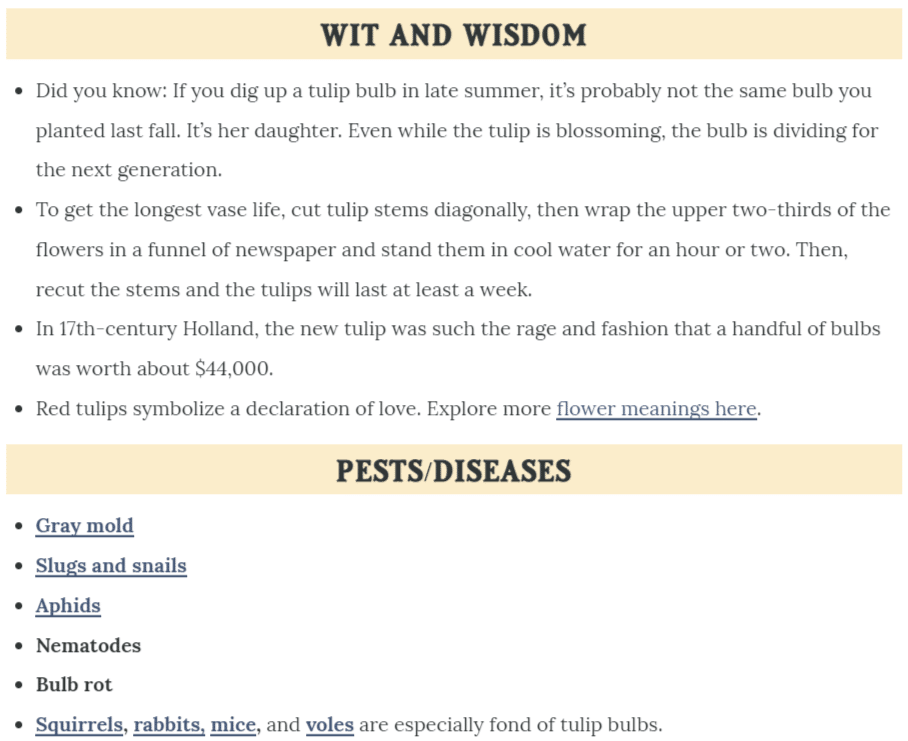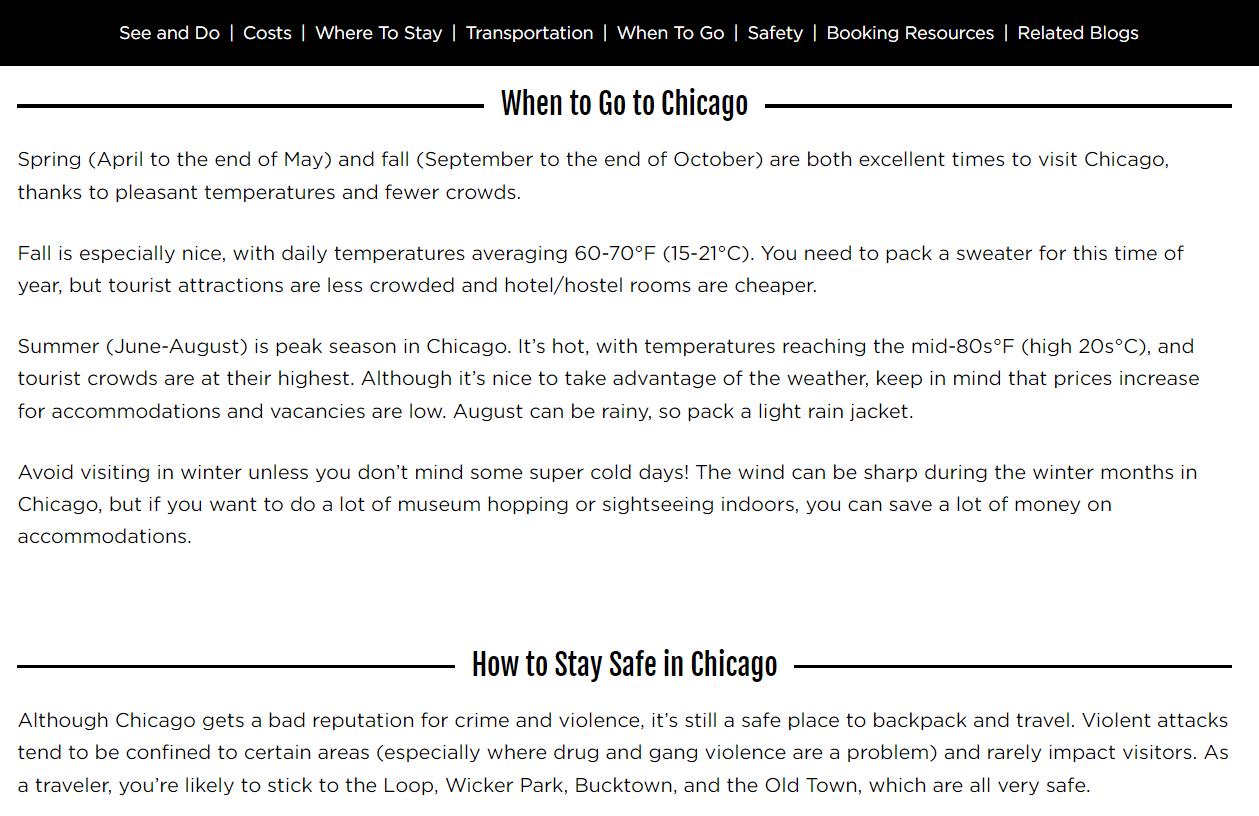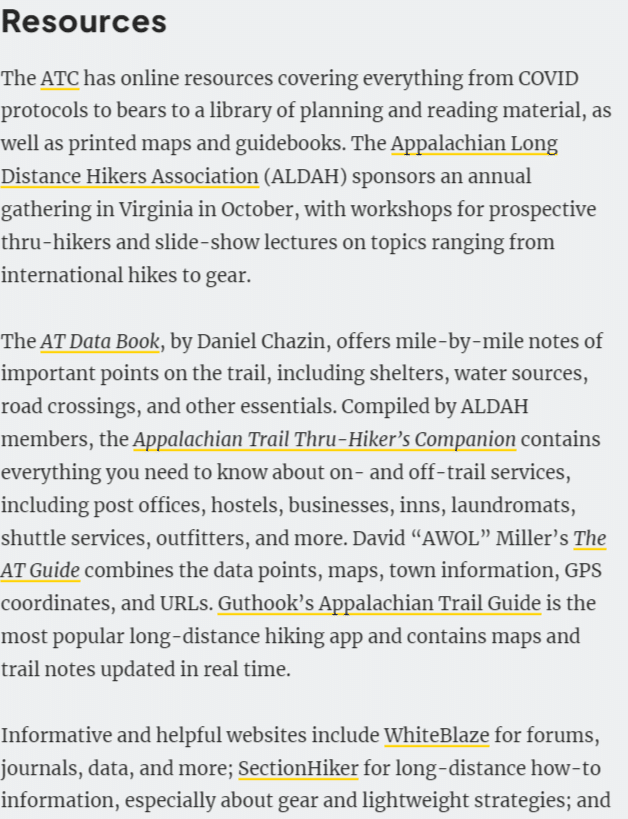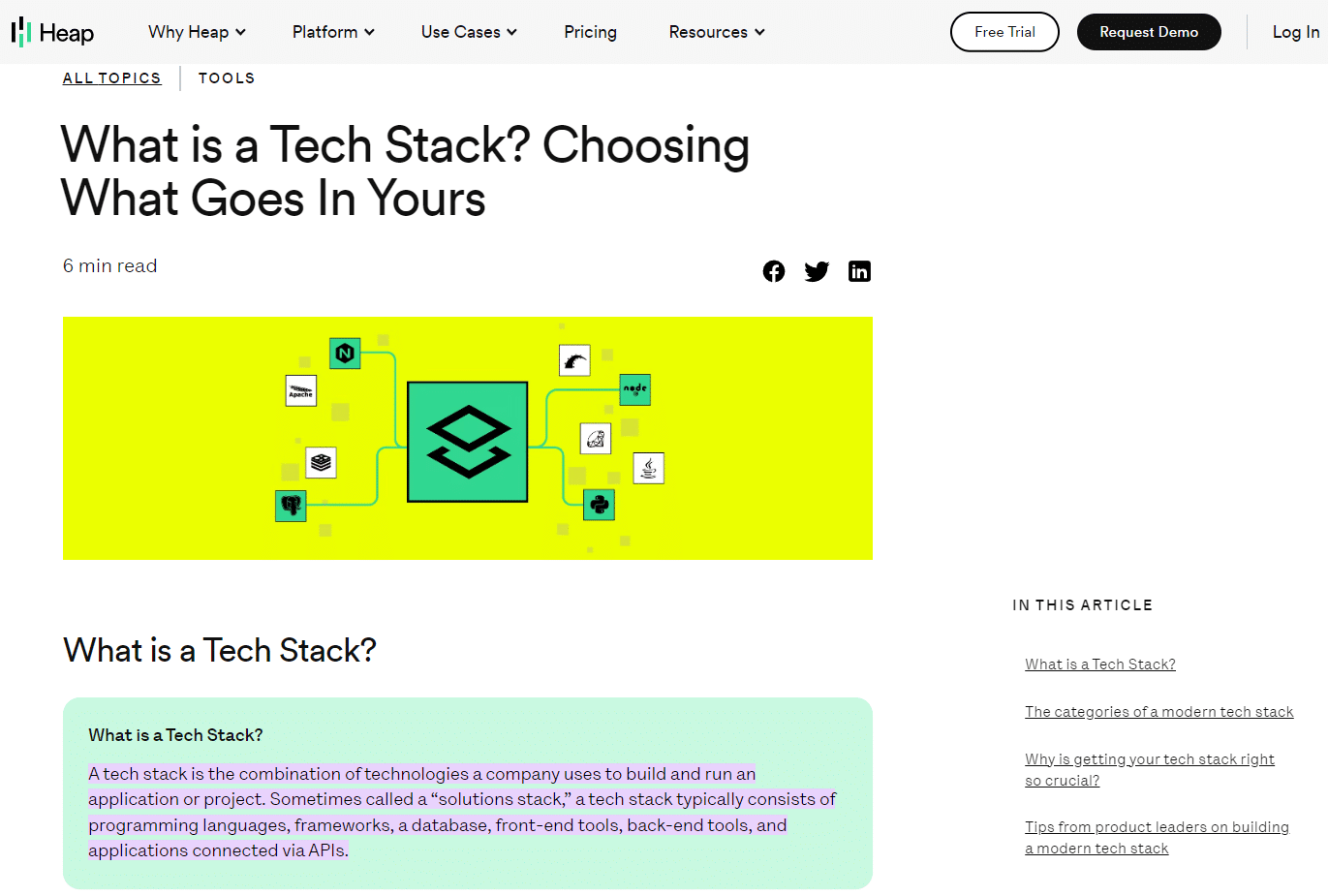Guides are all over the web. Google any word + “guide,” and you’ll probably find someone has written about that topic, no matter how obscure.
But there’s a good reason for this: Well-written guides are extremely valuable pieces of content.
When your audience encounters your guide at the right place and time, it can be life-changing. Your guide may be the cornerstone or the turning point in their experience of a particular topic.
You could teach them valuable skills, introduce them to a vital concept, expand their knowledge, or help them understand a complex subject.
As you’d imagine, a good guide can help build a strong trust between a person and a brand.
And trust contributes to the customer experience. It can eventually translate to profitable action like converting a casual reader into a subscribed follower or turning a fan into a customer.
That’s why it’s time to learn how to create optimized, useful, and comprehensive guides – so you, too, can build trust with your audience through high-quality content.
What is a guide?
A guide is a comprehensive piece of content that aims to educate an audience by:
- Introducing them to a topic or subject.
- Teaching them a set of concepts or ideas.
- Walking them through a process to achieve an end goal.
- Showing them the steps to complete an action.
Quite simply, an effective guide will teach you in some way.
But, the best of this content type will meet you at your level of understanding, speak to you in terms you understand, and take you to the next level to broaden your knowledge.
How to create a guide, ultimate-style
1. Understand the knowledge level of your target audience
To write a great guide, you need to understand your audience and know their knowledge level about your topic.
- What do they already know?
- Where are they starting from? (Are they beginners? Intermediates? Experts?)
- What do they not know?
- What are their top challenges?
These points are crucial to understand because you will use them as a benchmark for where your guide will begin and what it will cover.
Not understanding your audience’s knowledge level about your topic will lead to a less useful guide.
For example, starting a guide on baking bread with information about buying mixing bowls will be helpful only to true beginners who don’t have the right equipment yet. It won’t be helpful for baking enthusiasts who have moved beyond acquiring tools.
So, if you’re unsure what your audience knows or doesn’t know about your topic, you’ll need to do some research.
When all else fails, ask them directly. Post a poll or survey on social media, or post a question asking for feedback on what your audience would like to know about X topic.
2. Research and outline your topic
Now it’s time to start drafting your guide.
I always start with an outline and jot down everything I know the guide should include.
Then I research the topic to see what I’m missing, what others have written about it, and any additional tidbits I should add.
For example, even as an expert, you don’t want to rely entirely on your brain for fleshing out a topic.
You may know it well, but you also need to ensure you cover all the key areas readers care about.
Start by researching the topic on Google. Look at what the top articles cover and make sure your guide includes all of those sub-topics, too.
For example, say you’re writing a guide on planting tulips. You discover the guides at the top of Google also include information about when to plant them, how to care for them, and additional tips on varieties and container planting. That means your guide needs to be just as thorough.
When your outline is equally as comprehensive as the top articles in Google, you’re still not done. You need to go further.
Include information guided by your expertise (or the brand’s expertise). That’s the mixture of experience and education that’s unique to you that will differentiate your content from the masses.
- Add insights based on personal experience.
- Add insider knowledge that most people don’t have.
- Include tips, tricks, shortcuts, or advice.
- Include useful information that similar guides are missing.
For instance, in this particular tulip planting guide, the author added information on common pests and fun facts. Similar guides are missing these pieces:

Beyond Google, look at other information sources to flesh out your topic. Research books, look at interviews with experts, or watch videos.
Double-check to ensure you include the most accurate, relevant, and useful details in your guide.
3. Split your guide into sections, organized by sub-topic
At this point, while your draft is still pared down, it’s a good idea to get it organized.
- Split it into sections, with each section covering a specific sub-topic. For example, the tulip planting guide would be split into sections like “when to plant tulips,” “how to plant tulip bulbs,” “how to care for growing tulips,” and “tulip varieties.”
- Order the sections logically. You wouldn’t put “how to care for tulips” above the section on planting tulips, for instance, because one naturally precedes the other. (You can’t care for tulips you haven’t planted yet!)
- If your guide includes any instructions or steps, ensure they’re clear, laid out logically, and easily read. Number each step so readers understand the sequence at a glance.
4. Use keyword-rich headings
The best guides have clearly labeled sections with descriptive headings. This format helps readers find the information they’re looking for without having to hunt through unlabeled paragraphs that all bleed together.
It’s also good for SEO, especially if you include keywords in your section headings.
Here’s an example of a Chicago travel guide that uses clear, keyword-rich headings for each section:

Particularly, note that the keyword “Chicago” is included in each heading.
Imagine if each heading was more generic, like “When to Go” vs. “When to Go to Chicago.” The difference is optimization. The latter heading is optimized – and the former isn’t.
If adding the focus keyword in your section headings doesn’t make sense, consider including related terms and phrases instead. You can find these by entering your main keyword into Semrush or Ahrefs.
At the very least, write headings that help your reader scan your guide and find the necessary information.
5. Go deep
Guides are typically long-form content for a reason. When readers look for a guide on a subject, they expect comprehensiveness.
For that reason, don’t just skim the surface of your topic. Go deep.
That means you should try to include examples, descriptions, comparisons, or definitions in your guide.
- Examples put your subject in context for your readers. It shows them real-world applications of what you’re talking about.
- Descriptions give readers sensory details that can widen their understanding. For instance, you can describe how something looks, feels, tastes, or smells to help your audience imagine it better.
- Comparisons give additional context by comparing things your audience may not be familiar with to things they are familiar with.
- Definitions also lay the groundwork for understanding a topic or difficult concept. Defining these in plain language can set up your reader to get the most out of the rest of your guide.
You may use some of these techniques or all of them – it really depends on your topic.
For example, in a guide about making a complex dessert, you might want to describe how it should look and taste to help your audience understand a successful end product.
Similarly, in a guide about bird-watching, you could help your audience identify a particular bird species by comparing it to a similar species and noting the key differences.
Explaining a subject well is an art form, so take the time to get it right to create the most useful guide possible for your particular audience.
6. Research and link to useful, authoritative sources
Let’s return to high school English class briefly for this one. A useful lesson for writing guides is the importance of referencing sources to beef up your points.
In a nutshell, citing sources gives your content more credibility. Include them, and you’re essentially saying, “Hey, all these other authoritative people on this subject agree with me about this. That’s why you should listen to me.”
Even if you’re a known expert on your topic, including sources still shows that you did your homework. You’re drawing from the collective knowledge that exists on the topic, not just your own brain.
Even further, some claims need proof to be credible – like if you write a guide on birds and claim that 10% of bird species can’t fly. You’ll need to prove that’s true, even if you’re the top bird expert.
So, to add credibility to your guide, look for opportunities to link to authorities on the subject.
Search for recognizable names that are established authorities in the field. (Example: For medical information, known authorities include WebMD, Mayo Clinic, or the American Medical Association.)
Check their credentials and experience on their About page if the name isn’t well-known.
When evaluating websites, look at a variety of factors like their DA (domain authority) score, whether they accept and publish sponsored content, how they label that content, and whether the site is actually providing good information or if they’re just trying to sell you something.
(Note: A good identifier for credible websites is whether they accurately link to outside sources in their own content!)
Along with proving your credibility, linking to other sources can help provide additional information or context on your topic for readers from a trustworthy point of view (one you vetted for them!).
For that reason, consider adding links to related blog posts, ebooks, or even full-length books to allow the reader to learn more.
7. Add helpful visuals
It’s true what they say: A picture is worth 1,000 words. For that reason, adding helpful visuals to your guide is a great idea.
And, by the way, “visuals” means much more than just a few stock photos. Instead, try to find a variety of visuals in different formats that truly add meaning to your guide and clarify concepts.
- For instance, a guide on planting tulip bulbs might benefit from photos demonstrating how deep and far apart to dig the planting holes.
- A guide on learning to knit begs for a video or a series of photos demonstrating how to cast the yarn onto the needle.
- A guide on different types of mental disorders could use an infographic chart that compares and contrasts them.
- A beginner’s guide to a piece of software is much more useful with screenshots of processes and steps to use that software.
Think about what visual elements would add clarity to your text. If you were reading this guide as a beginner, what visuals would help you most?
8. Format for readability
Without good formatting, long-form guides can be a chore to read.
After all, when faced with a lengthy, unbroken wall of paragraphs on a web page, what’s your first instinct?
If you’re like most people, you probably want to run away screaming. Or, you try to read a few paragraphs, but they all start to run together as your eyes glaze over and your mind wanders.
If that’s your guide people are trying and failing to read, that’s a failed guide.
Instead, the most successful guides are easy to read, scan and skim to find the information you need.
That’s because they are:
- Organized and split into sections with clear, scannable headings.
- Formatted for online reading with short paragraphs and plenty of white space around the text.
- Digestible, even if the content is long, through the smart use of bulleted and numbered lists.
- Not dominated by walls of text – they include helpful visuals to break up the text further.
9. Edit and optimize
With your first draft complete, you can edit and optimize your guide.
Even if you don’t have an editor, self-editing helps you trim your content’s fat and improve it.
Editing steps:
- Walk away. Don’t try to edit the same day you finish writing. Give yourself a solid day away from the piece so you can see it more clearly.
- Edit for flow. Ensure your sections are ordered logically and flow well from one to the next.
- Clarify your writing. Simplify overly complex sentences, clean up your grammar, and check for spelling errors with an editing tool.
- Tweak the readability. Break up long paragraphs, look for places where you could replace paragraphs of information with lists or bullets, and determine whether you could add more visuals.
- Get a second pair of eyes. If you don’t have an editor, ask someone you trust to read the guide, edit, and provide feedback.
Optimization steps:
- Keyword placement. Check for your focus keyword in the title (H1), main headings (H2s), and at least one subheading (H3). It should also appear naturally throughout the piece, along with related terms. If you haven’t used it enough, edit it into the content a few more times.
- Meta title and description. Your keyword should appear at the beginning of these. When you write a meta description, think about how you can draw searchers in Google and describe the major benefit of reading your guide.
- Image alt text. Make sure your images have alt text defined and that a few of them contain the keyword.
- Links. Check that you’ve linked to related content on your site in a helpful way.
5 examples of effective guides
For inspiration and guidance, check out these examples of effective guides that incorporate all of the above steps well.
Hiking guide

This beginner's guide to hiking the Appalachian Trail details everything you need to know, including a trail overview, when to start, what to pack, where to sleep, what to eat, additional resources to read, and more.
This guide is also a great example of how to link to authoritative and useful sources in your content:

Definitive guide to influencer marketing

This ultimate guide will teach you every facet of influencer marketing – including the how, the what and the why.
It's super comprehensive and is broken down into chapters like "Getting Started with Influencer Marketing" and "How to Work with Influencers."
Cooking mushrooms guide
This guide is a great example of delving deep into a specific topic. The author breaks down 15 types of mushrooms, how they taste, and how to cook them for delicious results.
The kinds you've heard of – button mushrooms and shiitakes – are included, as well as ones you've probably never seen before, like black trumpet mushrooms or lion's mane mushrooms.
Financial planning guide
This financial planning guide is a great example of what I like to call "overview" content.
This type of guide provides an introduction to a topic for beginners. It helps them understand what something is, its importance, and how to get started.
This guide doesn't go deep but gives newbies the basics they need to understand the topic and eventually dive in deeper.
Tech stack guide

This tech stack guide's audience is software companies, so the content is framed for that audience's particular needs and problems.
It also uses vocabulary that the average person won't understand but the average software company staffer or founder will.
Create useful guides to nurture your audience
Creating a guide can be a huge undertaking, but it's worth it.
A useful guide will earn more than search traffic if optimized correctly – it will also bring in and build connections with people who need the information you're offering.
Provide helpful, readable, educational, and useful information, and your guide just might become the turning point in someone's experience of a topic.
That's powerful and can lead to greater things like growing your audience and, thus, growing your business.
The post How to create a guide that is optimized, useful and comprehensive appeared first on Search Engine Land.
No comments:
Post a Comment